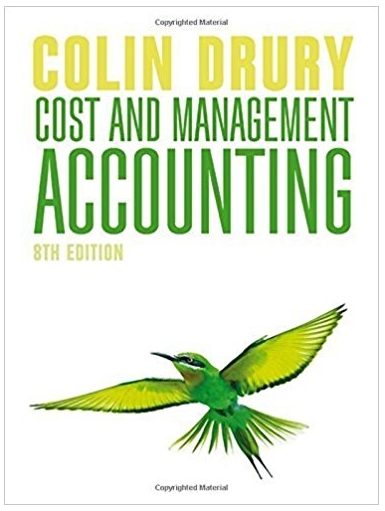Question
1. Vera Ltd manufactures table cloths. The company introduced a system of costing in January 2008 using the information of the previous year. The following
1. Vera Ltd manufactures table cloths. The company introduced a system of costing in January 2008 using the information of the previous year.
The following is the budget for 2008:
(i) Vera Ltd has a factory staff of 15 people. They all work 8 hours a day and a 5-day week.
(ii) Wages are paid at the rate of £6.40 per hour. All overtime is paid at the rate of basic wage plus £3.60 per hour.
(iii) All workers are required to produce one table cloth every 15 minutes. They are allowed to work overtime in order to achieve the target output for any period.
(iv) For purposes of control the company divides its costing periods into 4-week portions.
(v) As a result of material supplies being delayed in week 2 of the first 4-week period, workers were required to work an extra 2 hours per day in weeks 2 to 4 in order to achieve the target.
You are required to calculate the following information for the first 4-week period:
(a) standard hours worked;
(b) actual hours worked;
(c) labour efficiency variance;
(d) total standard wages;
(e) total actual wages;
(f) total wages variance;
(g) actual wage rate;
(h) wage rate variance
2. Marcel Ltd manufactures a product which has the following standard costs:
Selling price 262
Direct materials (2 kg) 104
Direct labour (3 hours) 61
Fixed overheads 9 174
Standard profit 88
In July the company budgets production of 1,400 units. The actual production is 1,700 units and the total sales for the month amounts to £579,020. The company sells its entire production and therefore incurs no costs in holding stock.
The actual costs for July were as follows:
Direct materials Usage is 2.16 kg per unit £264,384
Direct labour Total hours were 5,440 £136,000
Fixed overheads £18,000
You are required to calculate the following variances and reconcile them with the difference between the actual and budgeted results.
(i) Material usage and price variances.
(ii) Labour rate and efficiency variances.
(iii) Fixed overhead variance.
(iv) Sales price and volume variances.
Step by Step Solution
3.21 Rating (151 Votes )
There are 3 Steps involved in it
Step: 1
Vera Ltd a Standard hours worked The standard hours worked for the first 4week period are calculated as follows Standard hours worked Number of workers Number of hours worked per day Number of days wo...
Get Instant Access to Expert-Tailored Solutions
See step-by-step solutions with expert insights and AI powered tools for academic success
Step: 2

Step: 3

Ace Your Homework with AI
Get the answers you need in no time with our AI-driven, step-by-step assistance
Get Started


